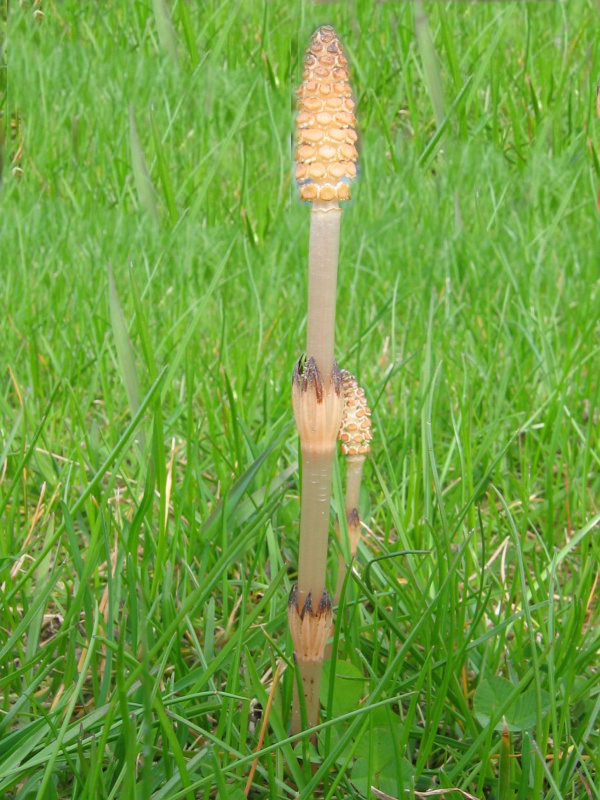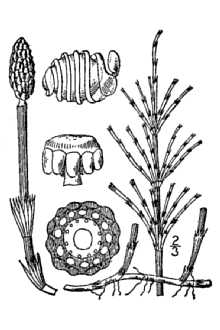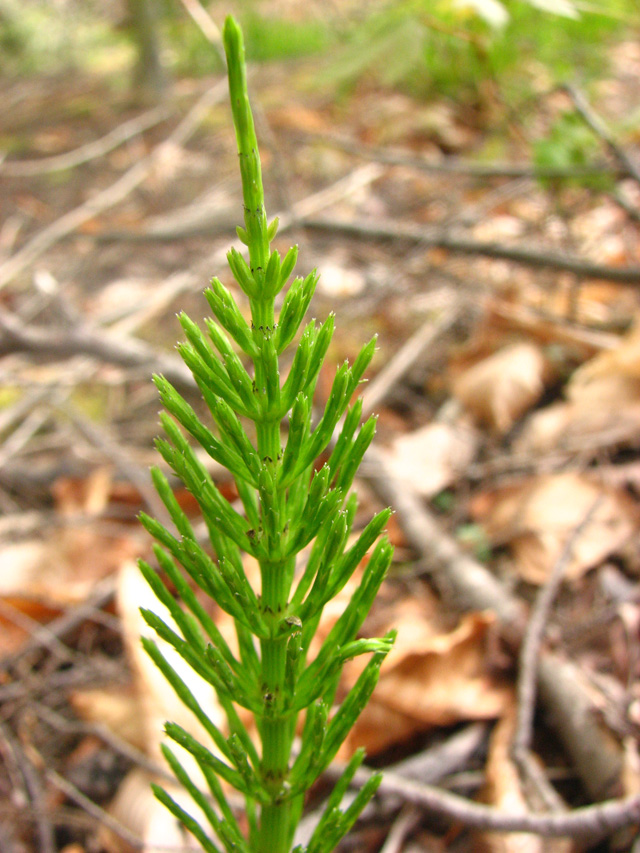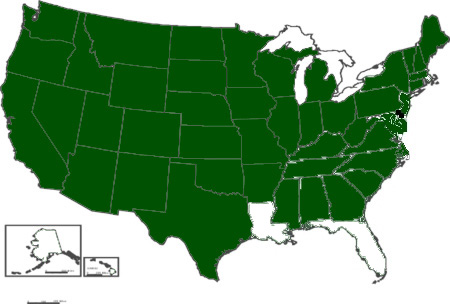Equisetum arvense
 |
  |
Photo above Wikicommons, reproductive &
right, vegetative, Renee Brecht |
Britton & Brown line drawing |
| Botanical name: | Equisetum arvense L. |
| Common name: | horsetail |
| Group: | horsetail |
| Family: | Equisetaceae; a fern |
| Growth type: | forb/herb |
| Duration: | perennial |
| Origin: | native |
| Plant height: | Fertile stems: 2-12" Sterile stems: 2-24" |
| Foliage: | May have sterile or fertile stems. The sterile stems grow after the fertile stems have withered. Sterile stems are joined with a set of whorled branches, and can have as many as 20 segments. Fertile stems are about half the height and more succulent. |
| Habitat: | damp, sandy, partially shaded areas, but will also tolerate dry and barren sites |
| Range in New Jersey: | statewide |
| Heritage ranking, if any: | n/a |
| Distribution: |  |
| Misc. | Cultural: Horsetail has been used medicinally, as well as a pewter and wood polish, perfumes, animal repellants, food flavorings, and as a dye. Silica can be extracted from horsetail and is used in the manufacture of diuretic products, etc. Equisetum = equus, "horse," seta, "bristle"; arvense = "field" A primitive plant, well-adapted to fire. Reproduces by spores and rhizomes and tubers. Excessive amounts are toxic to livestock, though the tubers are eaten by wildlife. Odd fact: Can accumulate up to 4.5 ounces of gold per ton of fresh plant material and is sometimes used as an indicator of gold. |